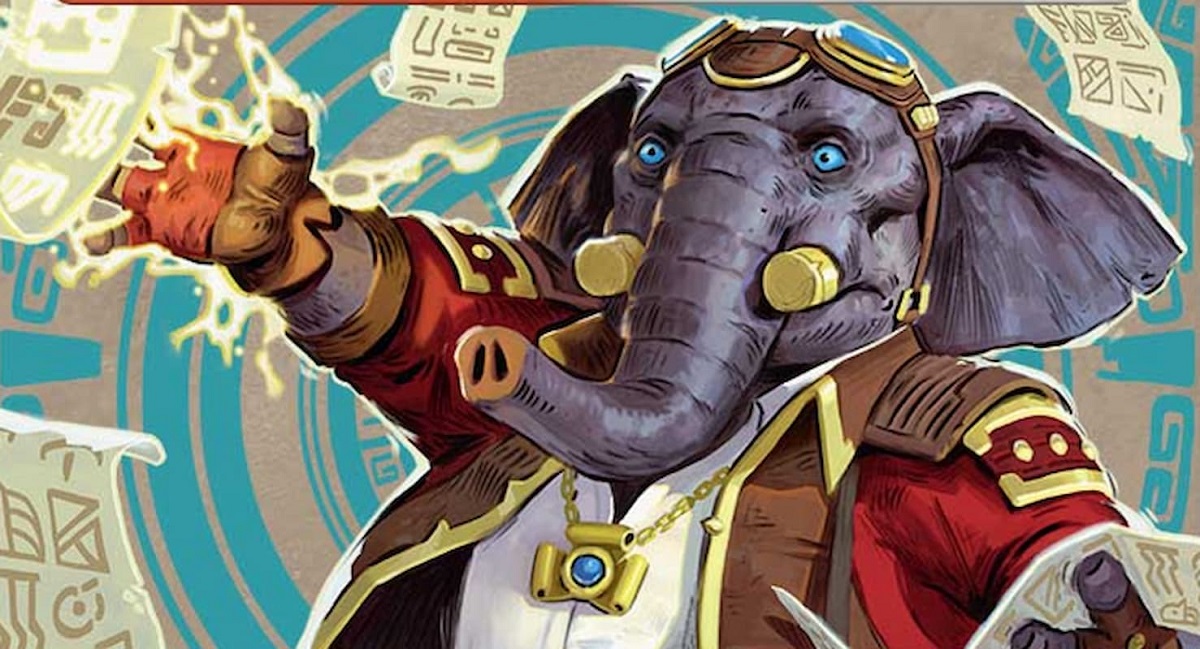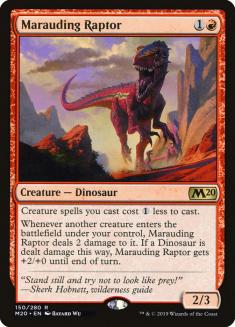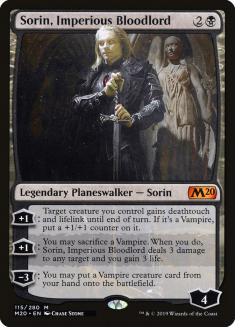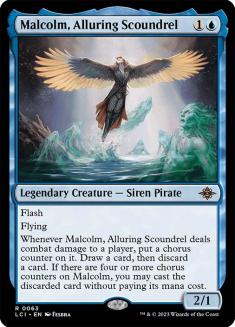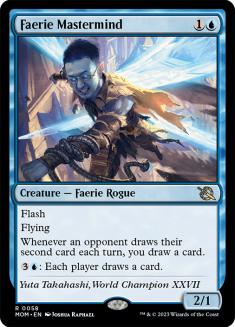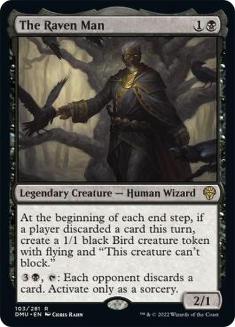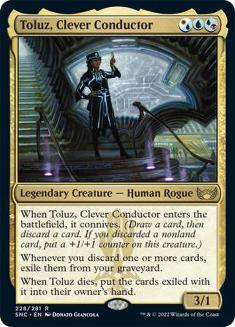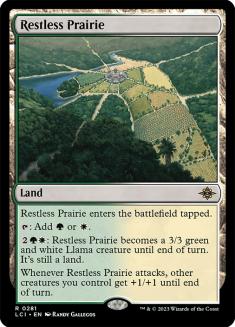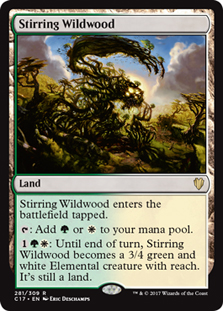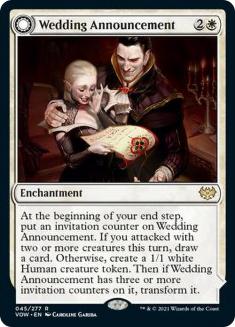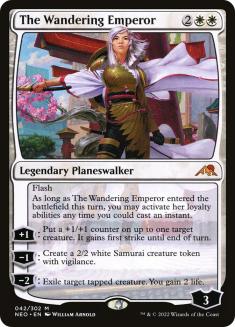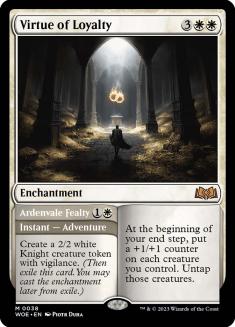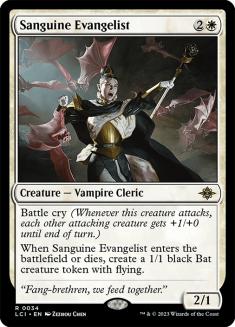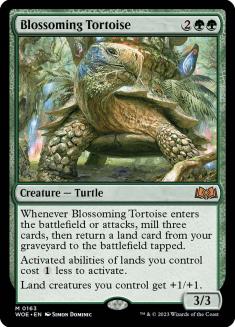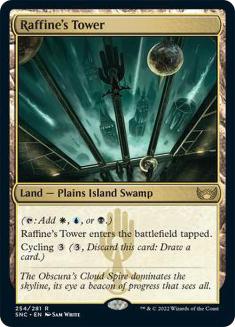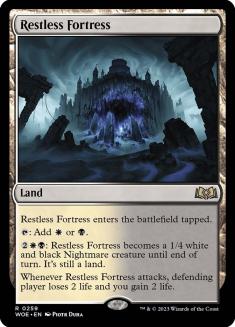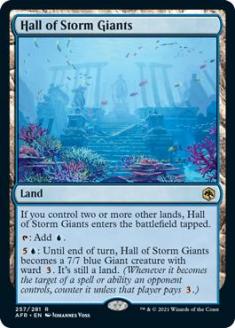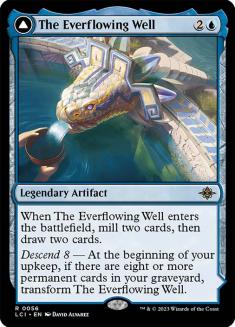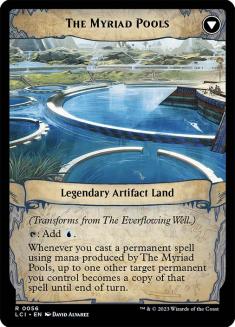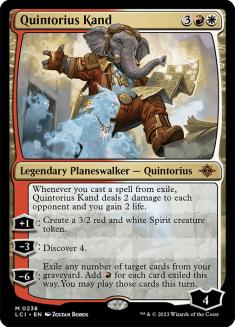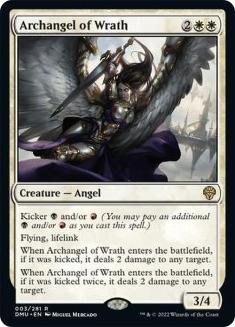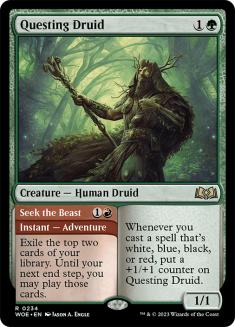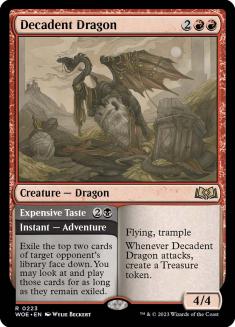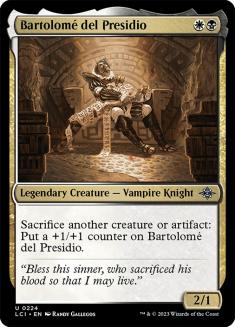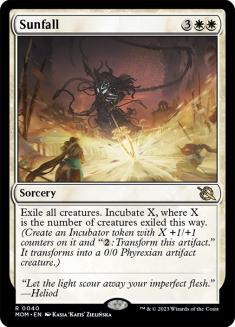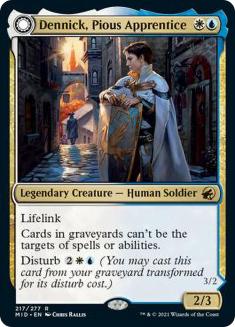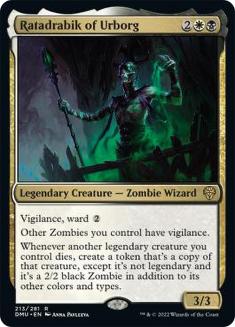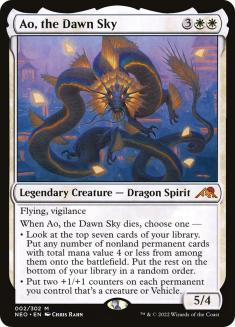Our first voyage to Ixalan was a real disappointment in Standard. The focus on popular but unconnected creature types grabbed attention as expected, but none of these creature types had proper support for Constructed (until a last-minute push in Core Set 2020 with cards like Marauding Raptor and Sorin, Imperious Bloodlord left players scrambling to dig up their Sanctum Seekers for one last hurrah before they rotated).
Nor was there any connective tissue between these factions for Limited, like the changelings in Lorwyn or Kaldheim (or ambitious crossovers like Ghalta and Mavren!), so once you declared your allegiance to Dinosaurs or Vampires, the other types meant nothing to you. Rivals of Ixalan was a bit better on both fronts, but it couldn’t rescue the block’s reputation.
Sometimes a set’s theme falls flat, but its more generic cards are strong enough to make a mark. Ixalan didn’t even have those! The occasional Search for Azcanta or Ravenous Chupacabra was no match for an entire Kaladesh block of Energy and Vehicles or the pushed power level of Amonkhet. When Throne of Eldraine made its entrance and Ixalan rotated out, the contrast was stark. One of the strongest sets ever replaced one of the weakest.
That arc has now come full circle. Wilds of Eldraine revisits that plane’s promising flavour and mechanics within a more sensible power band. After just one day of previews, The Lost Caverns of Ixalan has more hits than the entire block that first brought us there!
Let’s start with Standard, a format I’m glad we get to care about again with a Regional Championship Qualifier (RCQ) season on the horizon.
Malcolm, Alluring Scoundrel
Riding high after its World Championship win, Esper Legends is always on the hunt for cheap legendary creatures to fill its curve. Jean-Emmanuel Depraz’s list even featured the likeness of Yuta Takahashi, who vanquished him in the finals two years ago!
Faerie Mastermind punishing and enabling extra card draw comes up a lot, including against many of the best threats in each Esper variant (and Malcolm, Alluring Scoundrel himself!), but it mainly shines as an evasive threat whose flash is important against sweepers and plays well with your reactive cards post-sideboard against decks like Domain Ramp. The evasion is important enough that previous versions with fewer options resorted to Harbin, Vanguard Aviator with no Soldiers synergies as a hard-hitting flyer or a bargain-basement Malcolm in Suspicious Stowaway.
Malcolm has those benefits, but also boasts the legendary status that makes it work with Plaza of Heroes and Rona, Herald of Invasion, while boosting the discount on the legendary channel lands like Eiganjo, Seat of the Empire. This makes it one of the best two-drops on offer, but there’s a long enough list of contenders at each spot on the curve now that you can build the deck in several ways. Why compare Malcolm and Mastermind when you can double down on the flash plan with both? Once you’re there, The Wandering Emperor and Ertai Resurrected look appealing as your four-drops – especially if you lose Thalia, Guardian of Thraben to make room for these flashy two-drops.
Alternatively, Malcolm’s overlap with Rona and Raffine, Scheming Seer gives you enough looting effects that outmoded options like The Raven Man and Toluz, Clever Conductor look great again, and a staple like Sheoldred, the Apocalypse looks even better.
Restless Prairie
Llamas are my Dinosaurs – I’ll llove any set that can shoehorn them in a llot more for it. I’m not expecting Llamas to show up on Kamigawa or Phyrexia any time soon, but a boy can dream…
Personal bias aside, this card is exciting both in itself and for what it represents. The return of enemy-colour creature lands in Wilds of Eldraine was a welcome surprise, and most members of that cycle were more powerful and interesting than their counterparts in Battle for Zendikar block. Celestial Colonnade and friends set a higher bar for this round of allied-colour creature lands, but I expect these will thrive too.
The direct comparison here favours Restless Prairie. Stirring Wildwood was an odd duck, mainly remembered for ambushing any flyers whose hapless controllers forgot it had reach. The Selesnya and Bant/Naya decks of its era wanted to curve Noble Hierarch or Birds of Paradise into a three-drop, leaving no obvious room to take a turn off for Wildwood. It was a fine card to find with Knight of the Reliquary, yet made casting that Knight harder.
With just one creature, Restless Prairie already yields more power than Wildwood – and the best white cards in Standard already flood the battlefield with tokens. If you are going wide, Prairie enables massive attacks at a moment’s notice. It can also let you rebound after a sweeper. Just create some tokens at instant speed on their end step with Resolute Reinforcements or the like, wake up Restless Prairie, and cross the finish line.
Sanguine Evangelist and Other Applications
Every set brings strong token makers, and The Lost Caverns of Ixalan is no exception. Selesnya Tokens powered by Gavony Township was a powerhouse in its day, and that kind of strategy is generally sound in Standard unless the format is highly warped.
Blossoming Tortoise has popped up in Golgari Midrange alongside Restless Cottage and Mishra’s Foundry and is ready to rumble with any green creature-land. There’s no obvious Selesnya or Gruul shell yet, but that may change by the time we have the full card image gallery next week.
There are high hopes for the entire cycle in Standard. Esper Legends and Esper Midrange picked up Restless Fortress but would prefer something more on-plan. Another Celestial Colonnade or Creeping Tar Pit is a lot to ask for, but a good Azorius or Dimir creature-land would be another boost for Raffine, Scheming Seer (even if her Tower goes by the wayside to make room for it).
The Worldwake cycle isn’t in the Pioneer card pool, so Restless Prairie adds something unique there – but the bar is much higher thanks to other high-quality fixing and the Adventures in the Forgotten Realms creature-lands filling the same roles. Rakdos Midrange fans are yearning for something less embarrassing than Lavaclaw Reaches – but, even if they get their wish, is that better than more copies of Hive of the Eye Tyrant, which can actually cast Thoughtseize or Fatal Push on-curve?
The Everflowing Well
The Everflowing Well (with The Myriad Pools on the other side) is hard to wrap your head around. The humble Divination actually found its way into some control decks in the past – but the most recent set made that a thing of the past with Quick Study. You can’t be ‘just’ a Divination now – what else have you got?
Ignore the back face for a moment. If you care about the graveyard at all, the mill represents some fraction of an extra card. If you have ways to blink artifacts, care about artifacts in any way at all, or just want material for bargain, the Well can fill that wish. You need something extra, but that can be almost anything.
Once you transform Well, it’s easy to be distracted by the text on The Myriad Pools. If that turns into something useful, great – but the main prize is the extra land that casts whatever relevant spell the front side was digging for.
How does that compare to predecessors like Search for Azcanta (and how does that one hold up after this long)? Well gives you a better immediate return at a higher cost, but the condition to transform it is much harder to meet and points you in a very different direction. Search for Azcanta gave you inevitability in longer games, but also let you race towards its threshold to unlock your hand faster. This card can’t make either claim.
Quintorius Kand
Many planeswalkers follow a familiar template: some mix of creating creatures, drawing cards, and removing permanents. Quintorius Kand can do any or all of those things – but you don’t know yet!
That lack of certainty isn’t a deal-breaker, but it makes the card much harder to play both with and against. Building your deck to maximize your odds of hitting something relevant across a wide range of games states and knowing when you can or should spin the wheel on Quintorius are both deep challenges. I expect the crucial lesson of cascade was learned with discover – low mana values are very dangerous, whereas at higher mana values, it’s hard to remove the randomness by ensuring you can only hit one card or one type of effect. That pushes you towards a midrange deck full of universally strong cards that you’re never too sad to hit.
Note that there are a lot of effects in Standard that have an artificially low or high mana cost, or can let you sink your mana into what starts as a cheaper card. If Quintorius ticks up the turn it arrives, next turn, discover 4 might hit an Archangel of Wrath that you can kick up to twice for what feels like far more than a four-drop.
It’s easy to meet Quintorius’s condition in other ways, namely Adventures and the wealth of effects that exile cards from your deck or your opponent’s deck for you to cast. These are even bundled together in two of the more appealing red Adventure cards from Wilds of Eldraine – and Quintorius is relatively easy to splash in whatever bigger red deck you’re brewing here.
Bartolomé del Presidio
Finally, don’t forget about one of the best sacrifice outlets we’ve ever seen and the only free one in more than a decade for Pioneer. Bartolomé del Presidio might enable a whole family of combo decks by itself in that format, but it’s also likely to make waves in Standard at some point. Rally the Ancestors was a powerhouse, but it relied on Nantuko Husk as a free sacrifice outlet to shuttle creatures to the right zones. Bartolomé is the best Husk you could ask for – now we just need the Rally.
One obvious but uninspiring use case is letting recursive creatures come back for more against a removal suite that tries to exile everything. When Sunfall and Farewell are the main sweepers in Standard and Leyline Binding is a key removal spell in the biggest and best deck, a card like Edgar, Charmed Groom is likely to stay buried – unless Bartolomé can save it from that fate.
If you want a more exciting home for now, how about the “RataBlade” combo deck that Rei Zhang (aka cftsoc3) dazzled the world with months ago at the Regional Championship in San Diego? Bartolomé lets you sacrifice Ao or other legends on demand to keep these chains going – and is even a legend itself that can be resurrected with Ratadrabik in case the opponent tries to break the chain by hitting your sacrifice outlet.
This is just scratching the surface of what already looks to be a very deep set with lots of treats for every format. I can’t wait to explore its impact in those bigger card pools and see what the next batch of previews has to offer.

